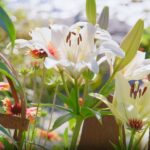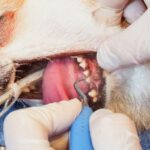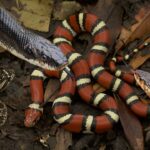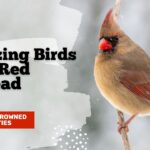Welcome, bird enthusiasts! Get ready for a journey through the world of avian marvels as we embark on an exploration of 18 astounding bird species, each distinctively sporting a touch of red on their head. This vibrant color serves as a bold declaration, adding to their unique charm and making them some of the most captivating creatures in the bird kingdom. From the exotic and colorful to the fierce and magnificent, the red-headed birds in this list display a wide variety of behaviors, habitats, and adaptations, showcasing the wondrous diversity of the avian world.
This blog post is not merely about their eye-catching appearance; it aims to delve into the life, behavior, and conservation status of these birds, granting us an in-depth understanding of these feathered marvels. Each of these species, characterized by their distinctive red-tinted heads, contributes in its unique way to maintaining the balance in the ecosystem they inhabit. The captivating tales of these birds remind us of the vital importance of biodiversity and the continuous need for its conservation.
1. Scarlet Macaw
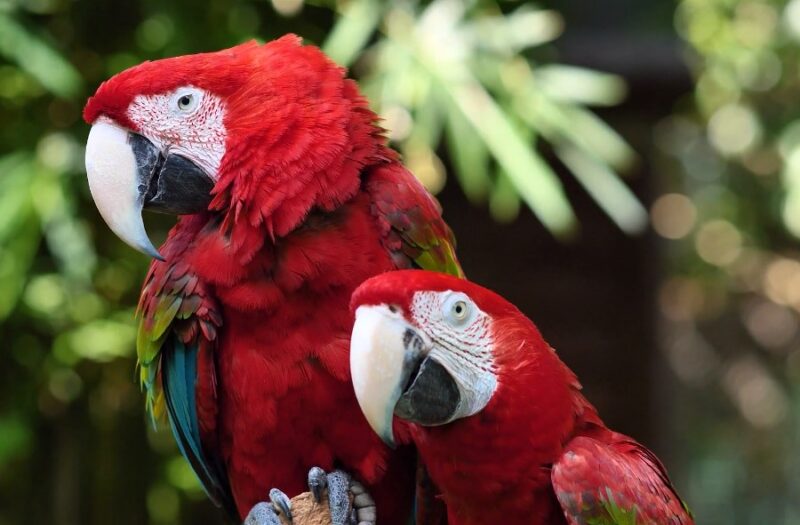
Beginning our journey in the tropical rainforests of Central and South America, we encounter the radiant Scarlet Macaw. With its gleaming red plumage, highlighted with streaks of yellow and blue, this bird is the very image of tropical beauty. The red hue extends to its head, setting off the white skin around its eyes and making its black beak stand out all the more. Renowned for their intelligence and character, these birds have a charm that goes beyond their vibrant colors.
The Scarlet Macaw, despite its captivating beauty, faces numerous threats in the wild. Habitat loss and illegal pet trade pose significant challenges to their survival. However, ongoing conservation efforts aim to protect these magnificent creatures. Sanctuaries and breeding programs have been established to ensure their populations remain steady and flourish in their natural habitats.
Scarlet Macaws play a vital role in their ecosystem. They’re avid seed dispersers, helping in the propagation of various plant species, thereby maintaining the biodiversity of the rainforest. Every aspect of their lives, from their social behavior to their eating habits, directly or indirectly contributes to the delicate balance of the rainforest ecosystem.
2. Northern Cardinal

Next, we travel northwards to the forests, gardens, and shrubberies of North America to meet the Northern Cardinal. Renowned for its striking red plumage and the prominent crimson crest on its head, this bird is a delight to spot. Male cardinals are entirely bright red, while females boast a more subtle, brownish color with red highlights. The black ‘mask’ seen on both genders further accentuates the bird’s vibrant head.
The Northern Cardinal is a songbird known for its melodious calls that fill the morning air. Males are particularly vociferous, using their songs to ward off rivals and attract mates. Cardinals are non-migratory and can be seen year-round, adding a splash of color to winter landscapes. Their diet mainly comprises seeds and fruits, though they also eat insects.
The Northern Cardinal is also the state bird for seven U.S. states, reflecting its popularity and cultural significance. Despite being common backyard birds, they’re wild at heart, wary of humans, and prefer to maintain their distance. Unlike many other birds, their population numbers remain robust, offering a hopeful note amidst the many tales of avian decline.
3. Red-headed Woodpecker
Our journey takes us next to the forests and open woodlands of North America, home to the Red-headed Woodpecker. This bird’s entire head and neck are covered in stunning scarlet, creating a striking contrast against its black wings and white underparts. It’s an active and agile bird, often seen fly-catching, gleaning insects off tree barks, or stashing away nuts for winter.
Red-headed Woodpeckers display a unique behavior known as “bill-wiping,” where they clean their beaks by rubbing them on a surface, typically a branch. It is thought to be a way to maintain hygiene and to remove the scent of food that may attract predators. These birds are known for their drumming behavior, a form of communication that resonates through the woods.
Despite their striking presence, Red-headed Woodpeckers are listed as a species of “Least Concern” on the IUCN Red List, mainly due to habitat loss. They rely heavily on dead trees for nesting and feeding, so the preservation of their habitats is vital for their survival. These woodpeckers remind us of the importance of every element in an ecosystem, including the seemingly lifeless dead trees.
4. Crimson Rosella
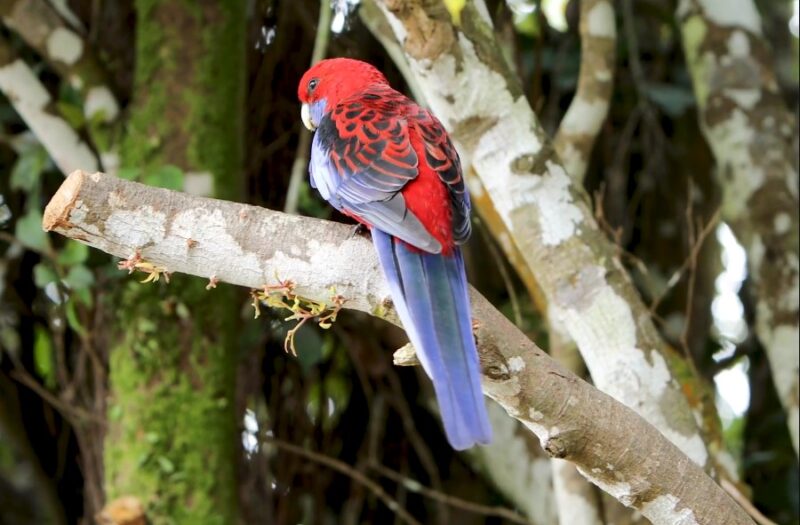
From the open woodlands of North America, we move to the vibrant landscapes of Australia to meet the colorful Crimson Rosella. True to its name, the bird sports a stunning crimson plumage, its head being a deeper shade of the same hue. Blue cheeks and black scalloped markings on the back and wings accentuate the bird’s vibrant redhead.
Crimson Rosellas are part of the parrot family, noted for their striking coloration and charismatic behavior. They’re often seen in small groups or pairs, feasting on seeds, fruits, nectar, and insects. While they’re popular as cage birds, their true beauty shines in their natural habitats, where they’re integral members of the ecosystem.
One fascinating aspect of Crimson Rosellas is their gradual color change as they mature. Juveniles are mostly green with patches of red, but as they grow older, they undergo a remarkable transformation into their brilliant red adult plumage. This unusual molt process is one of the many intriguing mysteries of the bird world.
5. Red-crowned Crane
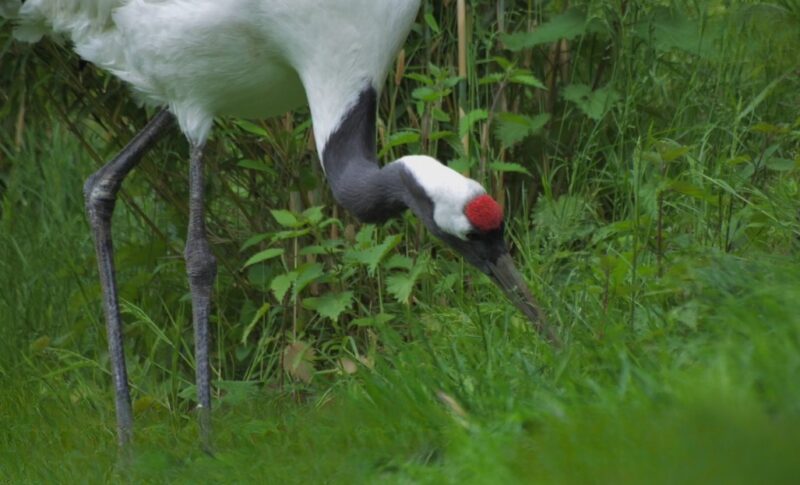
Next, we journey to the wetlands of East Asia, where we encounter one of the most regal of birds, the Red-crowned Crane. Standing tall with a height of up to 5 feet, it is distinguished by a patch of red skin on the crown, contrasting starkly with its white plumage and adding an imperial touch to its majestic stature. This species of crane is a symbol of luck, longevity, and fidelity in various Asian cultures.
Red-crowned Cranes are known for their captivating courtship dance, which involves elegant bowing, jumping, and an enchanting duet between the pair. Their diet consists mainly of aquatic plants, grains, and small animals, making them essential for maintaining biodiversity in wetland ecosystems.
Unfortunately, the Red-crowned Crane is classified as “Endangered” on the IUCN Red List due to habitat loss, pollution, and human disturbances. Concerted conservation efforts are being undertaken to save this species, which has a significant cultural and ecological role in its native habitats.
6. Red-fronted Parrot
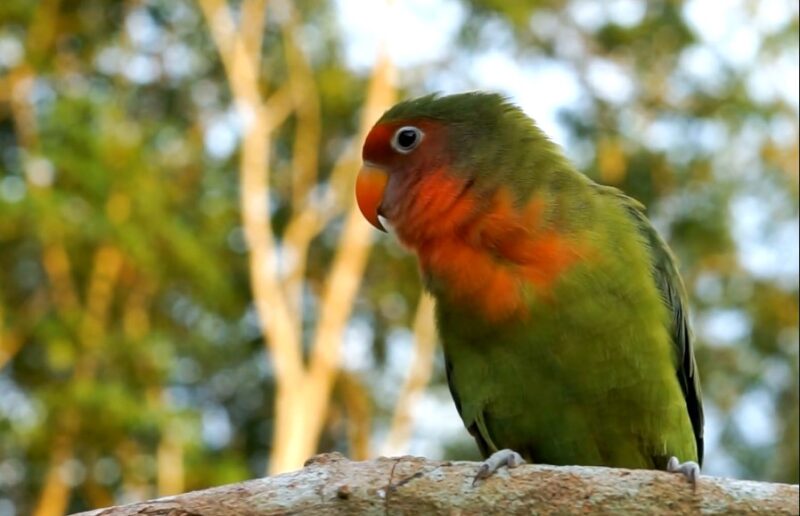
Shifting to the forests of central Africa, we find the lively Red-fronted Parrot. This medium-sized bird sports a bright red forehead, which gives the species its name. The vibrant hue adds a pop of color to its otherwise green plumage, making this parrot a sight to behold. Like other parrots, Red-fronted Parrots are intelligent and social creatures, often seen in large flocks.
These parrots primarily feed on fruits, seeds, and blossoms, playing a crucial role in seed dispersal and thus aiding in the growth and propagation of various plant species. Their loud, screeching calls echo through the forests, a testament to their vivacious spirit.
The Red-fronted Parrot is not currently endangered, but it faces threats from habitat loss due to deforestation. Awareness about the species and its role in the ecosystem is essential to ensure their survival in the wild. Their striking presence adds color and vitality to the African forests they call home.
7. Flame Robin
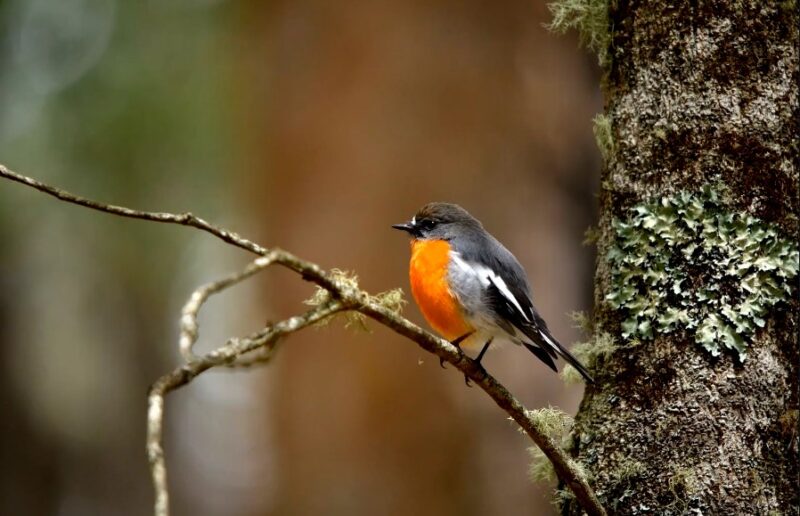
Venturing into the open forests and alpine regions of Australia, we meet the charming Flame Robin. The male of the species has a stunning bright red-orange throat and chest that make it look as though it has a flame for a heart. This vibrant coloration, contrasted with its dark grey-black back and wings, makes the Flame Robin a standout species.
The Flame Robin is a migratory bird that travels across Australia in search of food and suitable breeding conditions. Their diet is predominantly insectivorous, and they are known for their peculiar feeding technique of spotting their prey from a perch and then swooping down to catch it.
Despite their beauty, Flame Robins have seen a decline in numbers in recent years, primarily due to habitat loss from land clearing and bushfires. The fate of these birds serves as a reminder of the impacts human activities can have on wildlife, reinforcing the need for conservation efforts to preserve Australia’s unique biodiversity.
8. Red-faced Cormorant
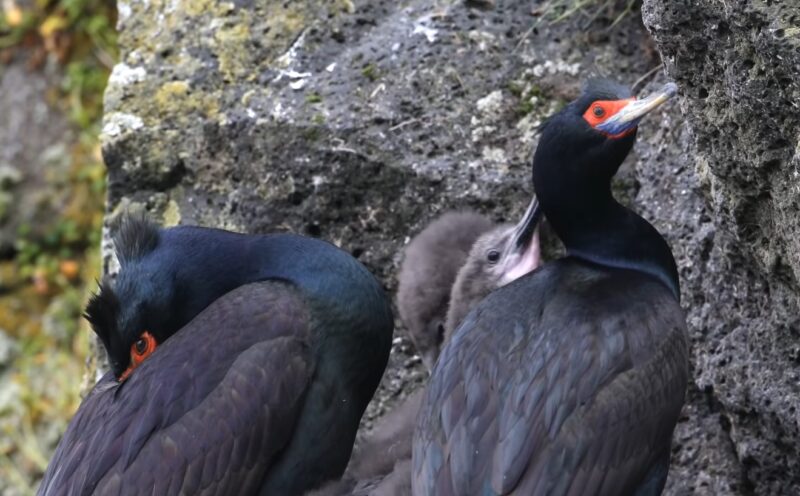
As we journey to the coasts of the northern Pacific Ocean, we encounter the Red-faced Cormorant, a bird defined by its dark plumage and distinctive red facial skin. This seabird, also known as the Violet Shag, has a purple-blue sheen on its body that beautifully complements its crimson face, making it a unique sight.
Red-faced Cormorants are expert divers, plunging into the water in search of fish and invertebrates. They often perch with their wings spread wide to dry—a characteristic behavior of cormorants. Their lives are inextricably tied to the health of the marine ecosystems they inhabit.
Despite their captivating appearance, little is known about the Red-faced Cormorant’s population trends due to their remote habitats. Nonetheless, they, like all seabirds, are susceptible to threats like pollution, overfishing, and climate change. Their existence underscores the importance of maintaining the health of our world’s oceans.
9. Red-headed Barbet
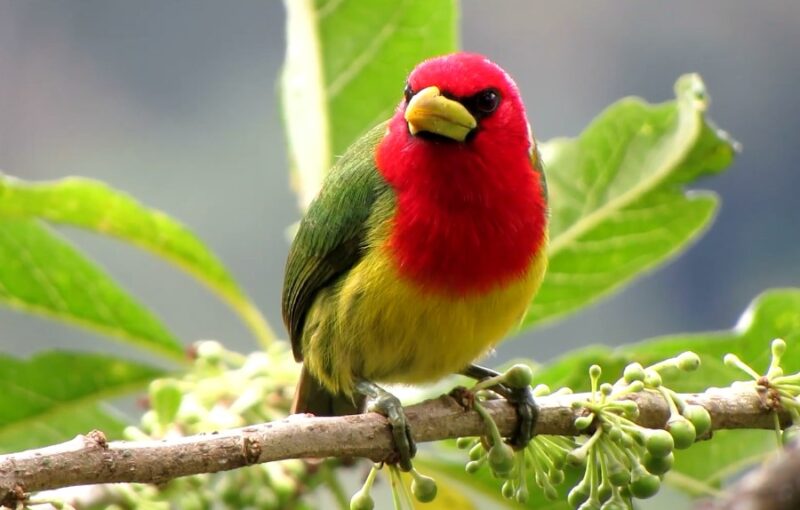
Heading to the tropical rainforests of Central and South America, we find the vibrant Red-headed Barbet. The male of this species sports a stunning red head, chest, and upper back, making it one of the most colorful and distinct birds on our list. Females, while not as brightly colored, also feature a touch of red on their heads.
Red-headed Barbets primarily feed on fruits, and they play a crucial role in their ecosystem as seed dispersers. Interestingly, these birds often engage in a behavior known as “anting,” where they rub ants on their feathers, possibly to remove parasites or utilize the ants’ defensive chemicals.
While not currently endangered, Red-headed Barbets are subject to habitat loss due to deforestation. Protection of their tropical forest habitat is critical to the survival of these colorful birds and the myriad other species that share their environment.
10. Red-legged Seriema
From the tropical forests, we move to the grasslands and scrublands of South America, home to the Red-legged Seriema. This bird, with its red legs and face, stands out in its environment. It’s known for its distinctive crest of feathers, which the bird raises during social or aggressive interactions.
The Red-legged Seriema has a unique diet among birds, including snakes, which it beats against the ground to kill and soften before swallowing. This unusual behavior adds to the bird’s intriguing character and makes it a fascinating subject of study.
This species is quite resilient and can adapt to a variety of environments, including altered landscapes. Nonetheless, its existence reminds us of the need to protect even the harsh habitats that house such remarkable creatures.
11. Red-breasted Merganser
Our journey brings us next to the lakes, rivers, and coastal waters of North America and Europe, where we find the Red-breasted Merganser. This distinctive duck sports a rust-colored neck and a green head, lending it an unusual, eye-catching appearance. Its narrow, serrated bill is specially adapted for catching and holding onto slippery fish.
Red-breasted Mergansers are excellent swimmers and divers, often diving deep into the water in search of fish. Unlike most ducks, they prefer to nest on the ground, often in sheltered areas or on islands, which offer protection from predators.
While their population is currently stable, Red-breasted Mergansers face threats from pollution, habitat loss, and entanglement in fishing nets. Their well-being is closely tied to the health of the aquatic ecosystems they inhabit, underscoring the interconnectedness of all life on our planet.
12. Red-headed Trogon
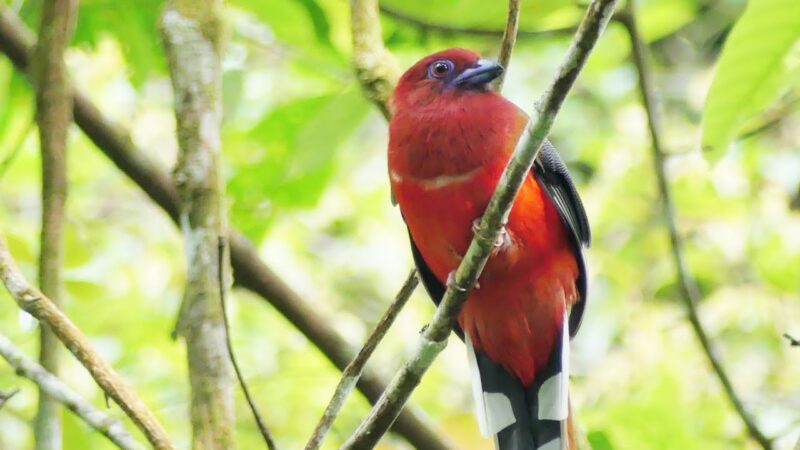
Heading to the dense forests of Southeast Asia, we find the Red-headed Trogon. This bird is named for its stunning red head, which provides a striking contrast against its soft, grey plumage. Females are not as brightly colored as males, but they share the same red head that gives the species its name.
Red-headed Trogons feed mainly on insects and small fruits, often perching motionless as they watch for prey. Their quiet demeanor and vibrant coloration make them a favorite among birdwatchers.
Although not currently threatened, the Red-headed Trogon, like many forest-dwelling species, is affected by habitat loss due to deforestation. Its existence in the lush forests of Southeast Asia reminds us of the need to preserve these vital ecosystems, which are home to a wealth of biodiversity.
13. Red-naped Sapsucker
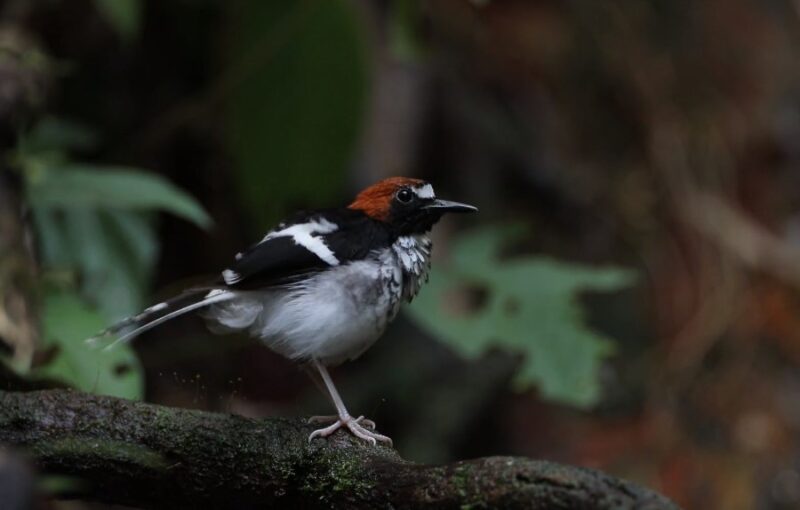
Moving to the forests of North America, we encounter the Red-naped Sapsucker. This bird gets its name from the striking red patch on the back of its head. Its black and white plumage is punctuated with a vibrant red throat, making this bird a sight to behold.
Red-naped Sapsuckers are known for drilling rows of small holes in tree trunks to feed on the sap and the insects attracted to it. This behavior, while sometimes damaging to trees, can benefit other species by providing a food source.
While the species is not currently endangered, it’s sensitive to changes in its forest habitat. The Red-naped Sapsucker serves as a reminder of the intricate web of interactions within ecosystems and the importance of preserving our forests for all the species that call them home.
14. Red-throated Caracara
Our journey next takes us to the tropical forests of Central and South America, where we encounter the Red-throated Caracara. This bird of prey sports a distinctive red throat patch that provides a stark contrast against its black plumage.
Red-throated Caracaras are known for their social behavior, often seen in family groups as they search for food. Their diet mainly consists of wasp larvae, and they have a unique tolerance for wasp stings, making them one of the few predators of these insects.
Despite being widely distributed, very little is known about the Red-throated Caracara’s population trends. This lack of information underscores the need for further study and conservation attention for many species, even those that may seem common.
15. Red-bearded Bee-eater
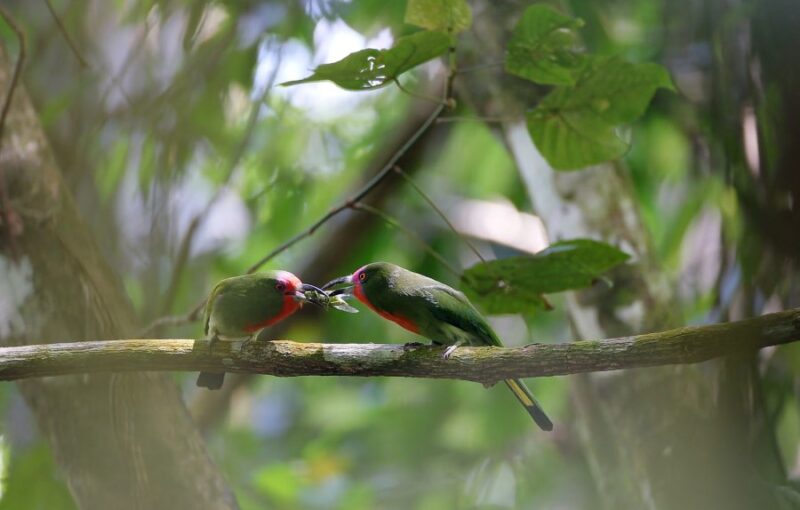
Moving to the forests of Southeast Asia, we find the Red-bearded Bee-eater, a bird known for its striking red beard-like throat patch. As their name implies, they feed primarily on bees, catching them in flight after a breathtaking display of aerial agility.
Red-bearded Bee-eaters are known for their distinctive nesting habits, excavating long tunnels into riverbanks or sandy soils. Their unique behaviors and stunning plumage make them a sought-after species among birdwatchers.
Although they are not currently threatened, habitat loss and degradation pose challenges for the Red-bearded Bee-eater, highlighting the need for habitat preservation and sustainable land-use practices.
16. Red-headed Bullfinch
In the high-altitude forests of the Himalayas, we find the Red-headed Bullfinch, a small bird with a fiery redhead and a soft, grey body. These birds are often seen in small groups or pairs, feeding on seeds and small insects.
The Red-headed Bullfinch is a hardy species, able to withstand the harsh conditions of its mountainous habitat. It’s a reminder of the resilience and adaptability of nature, even in the face of extreme environments.
While not currently threatened, the Red-headed Bullfinch is vulnerable to habitat loss and climate change. The fate of these birds serves as a reminder of the need for concerted efforts to preserve our planet’s diverse habitats and the species that inhabit them.
17. Vermilion Flycatcher
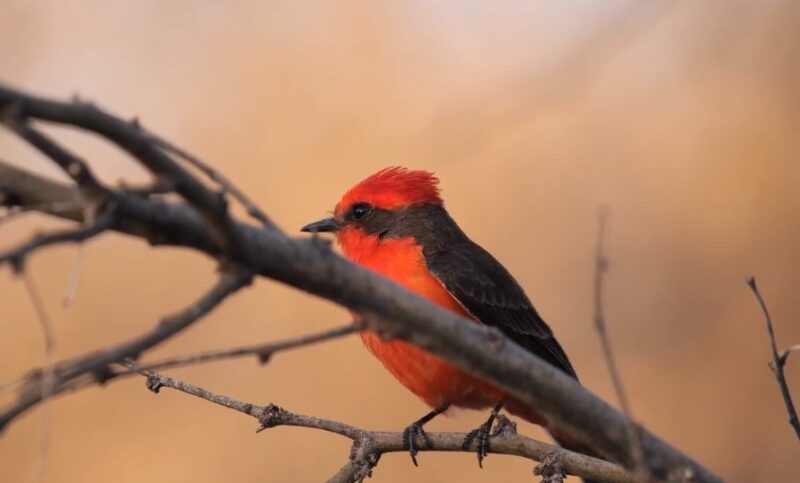
The Vermilion Flycatcher, found in the Americas, is a small bird with a vividly redhead and underparts. This bright coloration, contrasted with a dark, slate-grey back, makes the bird a spectacular sight to behold.
Vermilion Flycatchers are active hunters, often seen hovering before diving to catch insects. They are also known for their distinct mating display, where males fluff their feathers and perform aerial acrobatics to attract females.
While they are not currently threatened, Vermilion Flycatchers face challenges from habitat loss and pesticide use, which can reduce their food sources. Their continued existence depends on our ability to maintain healthy ecosystems and limit harmful human impacts.
18. Red-headed Parrot Finch
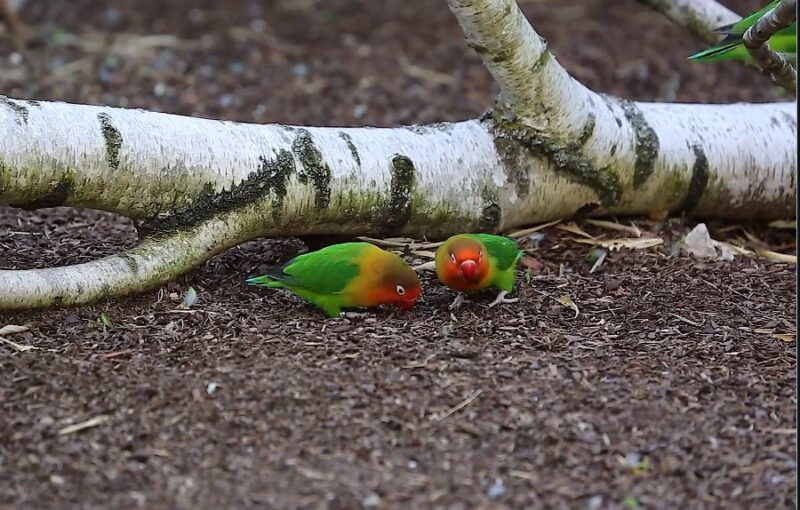
Finally, in the rainforests of the South Pacific, we find the Red-headed Parrot Finch. This small bird is named for its bright red head, which provides a striking contrast against its green body. These vibrant birds are known for their lively behavior and captivating songs.
Red-headed Parrot Finches feed primarily on seeds, often foraging in small groups. They are also known for their unique nesting habits, building complex, domed nests with a side entrance.
Although not currently endangered, the Red-headed Parrot Finch faces challenges from habitat loss and the pet trade. Its existence serves as a reminder of the delicate balance between human activities and wildlife preservation.
Final Words
Our journey through the world of birds with redheads has taken us across continents, through diverse habitats, and into the lives of some of the planet’s most captivating creatures. These birds, with their stunning plumage and intricate behaviors, remind us of the wonder and diversity of life on Earth.
Yet they also serve as a testament to the challenges faced by wildlife in our modern world, from habitat loss and pollution to climate change. It’s a reminder that the survival of these beautiful creatures depends on our actions and our commitment to preserving the world’s biodiversity. These 18 amazing birds with red on their heads are not just species to marvel at but also symbols of the natural world that we must strive to protect.




